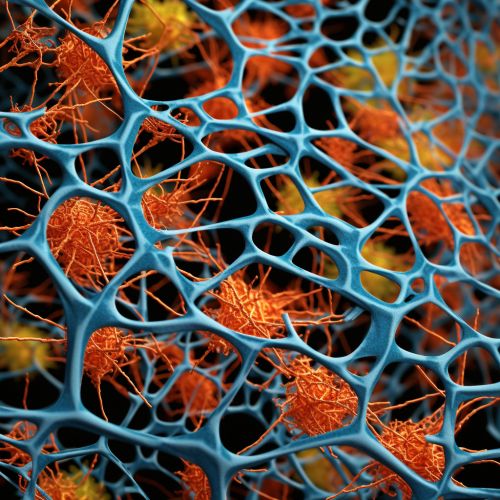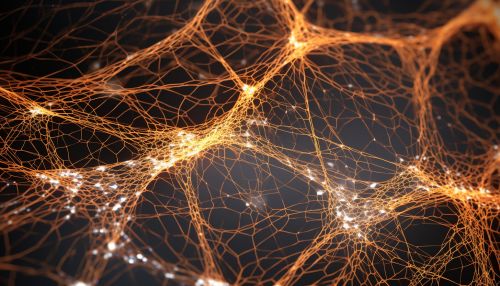Extracellular matrix
Overview
The extracellular matrix (ECM) is a three-dimensional network of extracellular macromolecules, such as collagen, enzymes, and glycoproteins, that provide structural and biochemical support to the surrounding cells. The ECM is found in all tissues and organs and plays a crucial role in tissue morphogenesis, differentiation, and homeostasis.


Composition
The ECM is composed primarily of two classes of biomolecules: fibrous proteins, which provide strength and flexibility, and proteoglycans, which fill spaces and resist compression. The most abundant fibrous protein in the ECM is collagen, which forms a fibrous network that provides tensile strength and helps to maintain the shape of tissues. Other fibrous proteins in the ECM include elastin, which provides elasticity, and fibronectin, which helps cells to adhere to the ECM.
Functions
The ECM has several important functions in the body. It provides a scaffold for cells, contributing to the physical properties of tissues and organs. It also plays a crucial role in cell signaling, influencing cell proliferation, migration, and differentiation. Furthermore, the ECM is involved in wound healing and tissue repair, and abnormalities in the ECM can lead to a variety of diseases, including fibrosis, cancer, and inflammatory diseases.
Role in Disease
Abnormalities in the ECM can lead to a variety of diseases. For example, excessive deposition of ECM components can lead to fibrosis, a condition characterized by thickening and scarring of connective tissue. On the other hand, degradation of the ECM can contribute to the progression of cancer, as it allows cancer cells to invade surrounding tissues and spread to other parts of the body. Furthermore, alterations in the ECM can contribute to the development of inflammatory diseases, as they can trigger an immune response.
